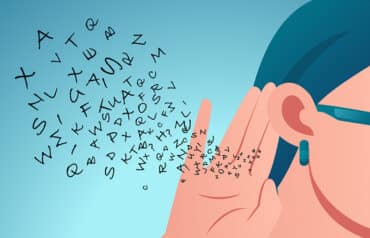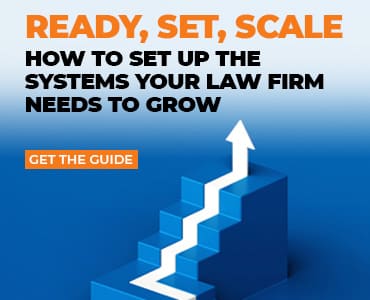Doing these simple breathing techniques helps you move from stress and anxiety to relaxation and inspiration.

Table of contents
From Stressed Out to Inspired: Just Breathe
There is only one thing we all must do, and that is breathe. The problem is, we are not trained to breathe properly, and this can have terrible effects on our nervous system and health. The way we breathe engages our nervous system, either for survival or relaxation.
Our ancestors had reptilian brains with one function: survival. Then we evolved into mammals, with additional neuro-functions such as relaxation, connection, creativity, inspiration and socialization.
When we engage our reptilian brain, we go to “Defcon5,” diverting all bodily energy into fight-or-flight mode. This includes rapid, shallow breathing that shuts down the frontal cortex. Our bodies can only handle short bursts in this state before becoming mentally, emotionally and physically exhausted.
Originally, the reptilian brain was brought on by the fear of predators. Now, it is brought on by the stress and anxiety of practicing law.
On the other hand, when we engage our mammal brain (frontal cortex), we relax, contemplate, rationalize and imagine. We slow down, our heart rate and blood pressure normalize, and we return to a resting and digestive state. This is where our bodies are supposed to be.
Understanding the Sympathetic and Parasympathetic Nervous Systems
Defcon5 (the reptilian brain) is known as the “sympathetic nervous system,” while the mammal brain is known as the “parasympathetic nervous system.” These systems are regulated without thinking; it is totally subconscious.
When you perceive a threat or have been traumatized, you engage the sympathetic nervous system and go into stress. Lawyers, by the nature of their work or training, can get stuck in this zone — and eventually, that leads to exhaustion and burnout. (According to a recent study of Massachusetts lawyers, 77% of the 4,500 lawyers surveyed were burnt out.)
Fortunately, you can engage the parasympathetic nervous system and relax.
The easiest way to do this is to breathe deep steady breaths or sing or hum. There is a specific reason for this, and it is due to the Vagus nerve.
The Vagus nerve is the body’s superhighway between the brain and body and is referred to as the mind-body connection.
The nerve stretches from the facial nerves to the cranial nerves to the top of the spinal column and descends through our body. Its function is to relay messages from the brain to the body’s organs and back.
When the sympathetic nervous system is engaged, our body secretes adrenalin and cortisol, which is unhealthy over the long term. Engaging the Vagus nerve engages the parasympathetic system. As a result, our brain secretes the “feel good” neurochemicals: endorphins, melatonin, serotonin and oxytocin.
The Vagus nerve runs behind our vocal cords, down our spine and radiates to our organs. Anytime we engage the muscles around our vocal cords (singing) and the lungs (breathing), we activate the Vagus nerves and, hence, the parasympathetic nervous system.
Breathing Techniques That Activate the Vagus Nerve
These easy techniques activate the Vagus nerve, which helps you drop out of stress and fear into relaxation and inspiration:
1. Breathing as Easy as 1, 2, 3, 4
There are lots of breathing techniques that activate the Vagus nerve. Anytime you fill your lungs, the muscles in your upper cavity are stimulating the polyvagal system. You inhale to the count of four, hold for the count of four, exhale for the count of four, then hold to the count of four. Repeat until you start feeling relaxed. Yawning is a sign your polyvagal system is activated, and your parasympathetic nervous system is engaged. You can also inhale to the count of four and exhale to the count of eight. Any rhythm where the exhale is longer than the inhale will engage the polyvagal system.
2. Breathing Loudly: ‘Ha’
This is pranayama breathing, otherwise known as “Ha” breath. Not only does this deep breathing activate the Vagus nerve at the lungs, but this technique will also activate the nerve at the vocal cords. Here, when you inhale, make a sound like you are snoring.
- Hold your tongue at the top of your mouth as you inhale. This will make the back of your throat vibrate and activate the polyvagal system.
- When you exhale, say “Ha” softly. Breathe as deeply as possible and fully exhale. This will totally calm down your systems.
3. Activating Your Vocal Cords: ‘OM’
When you sing or hum, you are activating your vocal cords, which activates the polyvagal system, especially at lower, bass frequencies. When you combine singing or humming with deep breathing, you are stimulating the parasympathetic nervous system. This is why Eastern monks chant “Om” during their meditations and many religious sects use singing to bring on a euphoric state.
It is not necessary to say “Om”; you can just hum a tune and it works as well. By breathing deeply and humming or singing, your stress deregulates and you become calm.
Make It a Habit
With these simple breathing techniques, you can manage your stress. The trick is to do them regularly throughout the day. The more often you do them, the less stress and anxiety you will feel.
Image © iStockPhoto.com.

Sign up for Attorney at Work’s daily practice tips newsletter here and subscribe to our podcast, Attorney at Work Today.
















